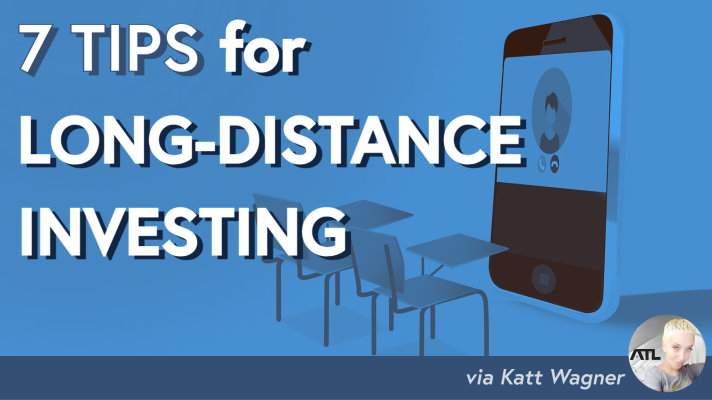Get new podcast episodes and blog posts straight to your inbox:

With low interest rates and the work-from-home boom, the demand for housing has surged in many areas across the country. Investing in areas where demand is growing is a great idea, and is entirely possible to do long-distance.
Here are some tips to consider when thinking about long-distance investing:
- Find a local Real Estate Agent – Having a dependable and knowledgeable agent in the market where you’ll be investing long-distance gives you important boots on the ground. A great way to find a strong agent is to seek an agent that has their own team, as this suggests they have been successful enough to scale and grow their business. They have likely built strong relationships with quality property managers, general contractors, and photographers in the community and will know who to send out to find, prepare, and maintain your investment properties. A strong agent will also be able to give you insight on the biggest housing expenses in the area you’re investing in.
- Find Out What Property Taxes You’ll Be Paying – You’re likely familiar with property taxes in your own market, but don’t overlook this simple step when browsing long-distance markets!
- Get and Idea of Homeowner’s Insurance Rates – Same as tip #2: You probably have a good idea of homeowner’s insurance rates and benefits in your local market, but there could be significant differences between what you’re used to and what homeowner’s insurance rates look like in the long-distance markets you’re considering. Take a few moments to get familiar with homeowner’s insurance rates as you’re doing your research.
- Research Neighborhood Desirability – Get more granular than just the overarching location and look at the walk scores of different neighborhoods. If you’ll be renting a property out and/or buying to hold and sell a few years from now, desirability is foundational to the underlying demand of housing in one neighborhood vs. the next.
- Calculate Rent – Use a tool like rentometer.com to get a rough idea of monthly rental income for specific properties. Then, head over to Craigslist.com, apartments.com, or Facebook Marketplace>Rentals to get a big-picture view of what rentals are going for, and what availability looks like.
The goal here is two-fold: To establish a bottom line for what renters in the area will pay for what you’re offering; and to establish a ceiling – knowing the most people are paying to live in a neighborhood will help you set a budget for repairs and upgrades that makes sense for rentability. This range is crucial in determining if the purchase price + estimated repair costs make sense. - Get an Idea of Vacancy Periods – Bookmark a few properties as you’re searching for answers in step #5. Check them periodically to see if they are still available; if units are going quickly, demand is high and that’s a good sign you won’t have to deal with long vacancy periods if your rent price is set properly. Low vacancy periods can also indicate high neighborhood desirability.
- Consider the Long-Term Price-to-Rent Ratio. This is where the 1-percent rule comes into play: If a property can generate 1% of the purchase price in rent each month, the price-to-rent ratio is strong and indicates a high likelihood of profitability and positive cash-flow. Consider your overall cost to purchase the house (purchase price, financing fees, interest, etc..), repair costs before renting, ongoing maintenance costs, and tax and insurance payments when estimating your cash flow. Will this cash-flow hedge against unfavorable marketing conditions? Do trends in market conditions suggest the value of the property will go up with the market? If the answer to both questions is yes, you’re likely looking at a great long-term investment opportunity: positive monthly cash-flow and a chance to make a profit by selling down the road.
Investing does not require your physical presence – it simply requires due diligence and a willingness to work with the right partners in the target market. If you’re willing to dot your i’s and cross your t’s, long-distance investing is a great way to build your property portfolio and grow wealth strategically.
Probates often involve Property Distress and Owner Distress, two factors that can help you buy investment properties below market value. What would Probate Leads in Another Market Cost?
